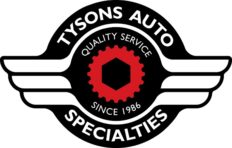Probably the most ignored fluid in the car, and the most important, is the brake fluid.
Brake fluid is not a petroleum-based product, so it does absorb moisture from the air, which diminishes its effectiveness and lowers braking performance. Sludge will also build up over a period of time and may block the valves inside anti-lock brake (ABS) units and result in costly repairs or replacement.
In addition, this sludge may cause calipers and wheel cylinders to leak, also resulting in repairs or replacement. So the best thing to do is to have the brake fluid flushed and refilled periodically, although manufacturer recommendations vary as to how often.
A good rule of thumb is to have the brake fluid changed and the system flushed every 24 months. The transmission fluid also needs to be changed on a regular basis to help keep the transmission in tip-top shape. Here again, some manufacturers have increased maintenance intervals to 100,000 miles for tune ups, but they still need periodic maintenance.
Most transmission failures can be directly traced to lack of maintenance. When planning your maintenance schedule, consider that even one transmission replacement will probably greatly exceed the cost of all the fluid and filter changes for the entire life of the car.
Power steering is another fluid that is often ignored. It is recommended that it be flushed and refilled at least as often as you replace the brake fluid.
[Remember we’re offering a December special on a power steering flush.]
Replacing the differential fluid is something that is most often overlooked. A regular fluid change will help the differential last the life of the vehicle. If your vehicle is four- or all-wheeldrive, change the transfer case fluid as well.
Information courtesy of the National Institute for Automotive Service Excellence (ASE).
The National Institute for Automotive Service Excellence (ASE) was founded in 1972 as a non-profit, independent organization dedicated to improving the quality of automotive service and repair through the voluntary testing and certification of automotive technicians. ASE-certified technicians wear blue and white ASE shoulder insignia and carry credentials listing their exact area(s) of certification. Their employers often display the blue and white ASE sign.
